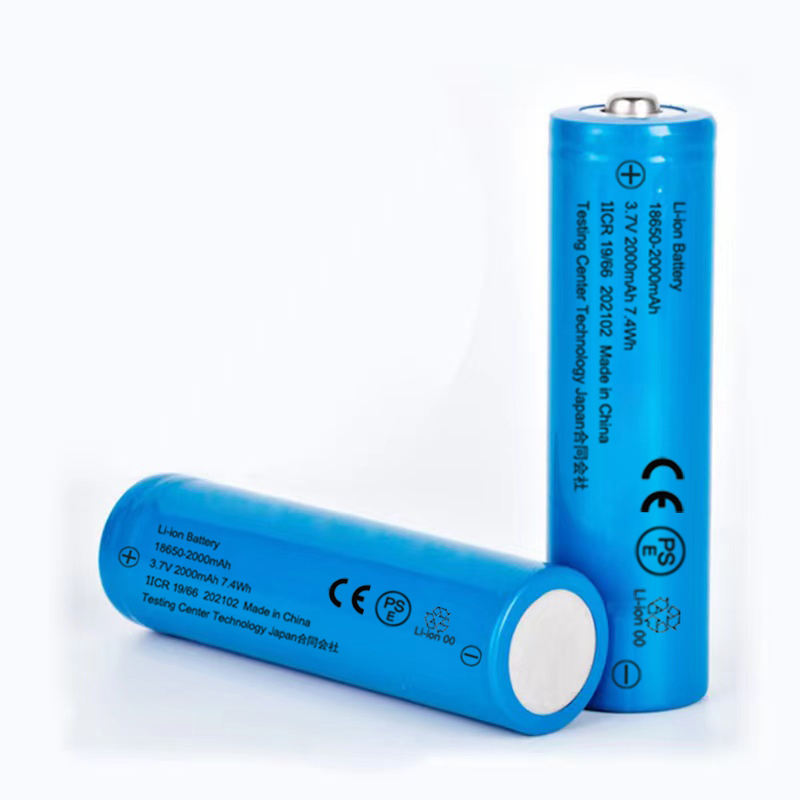How to Improve Flashlight Battery Life

Caring for your flashlight battery ensures reliability when you need it most. Proper maintenance saves money by extending battery life and reducing replacements. Simple actions, like storing your flashlight correctly or using high-quality batteries, can make a significant difference. These small efforts guarantee your flashlight performs efficiently during emergencies or outdoor adventures.
Key Takeaways
Keep flashlight batteries in a cool, dry spot to last longer.
Choose good-quality batteries for better use and longer life. Rechargeable ones save money and help the environment.
Clean battery ends often and look for rust to stop power loss.
Choosing the Right Flashlight Battery

Alkaline vs. Rechargeable Options
Selecting between alkaline and rechargeable flashlight batteries depends on your needs and priorities. Alkaline batteries are widely available and inexpensive upfront, making them a convenient choice for occasional use. However, they are single-use and contribute significantly to landfill waste. Rechargeable batteries, on the other hand, offer long-term savings and environmental benefits. They can be recharged hundreds of times, reducing waste and resource consumption.
Aspect | Alkaline Batteries | Rechargeable Batteries |
|---|---|---|
Environmental Impact | Potential leaching of chemicals into groundwater from landfills | Minimal impact due to reuse and recycling |
Resource Use | High resource consumption for manufacturing | Lower resource consumption due to reusability |
Longevity | Single-use, leading to more waste | Can be charged 1000+ times, reducing waste |
Cost Over Time | Cheaper upfront but more expensive in the long run | Higher initial cost but savings after multiple uses |
Waste Management | Often ends up in landfills | More sustainable with recycling options available |
Benefits of High-Quality Batteries
Investing in high-quality batteries ensures better performance and longer battery life. Premium brands like Panasonic, Samsung, and Nitecore provide reliable power output and durability. These batteries are less prone to leakage and perform well under extreme conditions. Using trusted brands reduces the risk of damage to your flashlight and ensures consistent performance during critical moments.
Recommended brands include:
Efest
Epoch
EVE
LithiumWerks
Molicel
Nitecore
Panasonic
Samsung
Sanyo
Sony | Murata
Vapcell
Matching Batteries to Your Flashlight
Choosing the right battery for your flashlight involves understanding its specific requirements. Start by checking the voltage, size, and power consumption. Consider the battery chemistry, such as lithium-ion or NiMH, for optimal performance. Evaluate the capacity to ensure sufficient runtime and verify compatibility with the flashlight model. Rechargeable options are ideal for frequent use, offering cost-effectiveness and convenience. Always follow the manufacturer’s recommendations to avoid performance issues.
Understand your flashlight’s requirements, including voltage, size, and power consumption.
Consider battery chemistry options like lithium-ion, NiMH, and alkaline.
Evaluate voltage and capacity for optimal runtime and performance.
Check the size and form factor to ensure proper fitment.
Consider rechargeable options for cost-effectiveness and convenience.
Check compatibility with the flashlight model as per manufacturer recommendations.
Evaluate environmental conditions for battery performance in extreme situations.
Consider long-term costs of rechargeable versus disposable batteries.
Proper Storage for Battery Life Maximization
Ideal Storage Conditions
Storing your flashlight batteries correctly is essential for lifespan maximization. Always keep batteries in a cool, dry place to prevent damage from moisture or temperature fluctuations. Avoid locations exposed to direct sunlight or high humidity, such as near windows or in bathrooms. Use a dedicated storage container to protect batteries from dust and debris, which can lead to corrosion. If possible, store batteries in their original packaging or a battery case to prevent accidental short circuits. These correct storage practices ensure your batteries remain in optimal condition for longer periods.
Removing Batteries During Inactivity
When your flashlight will not be used for an extended period, remove the batteries. This simple step prevents slow discharge and reduces the risk of leakage, which can damage the flashlight's internal components. Store the removed batteries separately in a safe location. For rechargeable batteries, ensure they are partially charged before storage, as storing them at 0% can shorten their lifespan. By taking this precaution, you can avoid unnecessary wear and tear on both the batteries and the flashlight.
Protecting Batteries from Extreme Temperatures
Extreme temperatures can significantly impact battery life and performance. High temperatures accelerate chemical reactions, causing batteries to age prematurely and discharge faster. Cold temperatures, on the other hand, can temporarily reduce capacity and hinder power delivery. Alkaline batteries are particularly vulnerable to cold, while lithium batteries perform better in freezing conditions, even as low as -45°F. To protect your batteries, store them in a temperature-controlled environment. Avoid leaving them in cars, garages, or other areas prone to temperature extremes. Consider using a battery monitor or management system to prevent overheating and ensure balanced voltage. These tips will help you achieve battery life maximization and maintain reliable performance.
Maximizing Battery Life Through Charging Techniques

Following Manufacturer Instructions
Adhering to the manufacturer's guidelines is essential for proper charging techniques. Each flashlight battery has unique specifications, including voltage and charging limits. Ignoring these recommendations can lead to reduced performance or even permanent damage. Always refer to the user manual or product label for specific instructions. For rechargeable batteries, use chargers designed for the correct battery type. This ensures safe and efficient charging, which helps in maximizing battery life. Avoid using generic chargers that may not meet the required standards, as they can cause overheating or overcharging.
Preventing Overcharging
Overcharging is one of the most common mistakes that reduce flashlight battery life. Leaving batteries connected to a charger for extended periods generates excessive heat, which damages the battery cells. This not only shortens the lifespan but also poses safety risks. To prevent overcharging, unplug the charger as soon as the battery reaches full capacity. Many modern chargers include an automatic shut-off feature, which stops charging once the battery is full. If your charger lacks this feature, set a timer to remind yourself to disconnect it. Proper charging techniques like these protect your batteries and ensure long-term reliability.
Using Smart Chargers Effectively
Smart chargers are excellent tools for maintaining flashlight battery health. These devices monitor the charging process and adjust the current to prevent overcharging. They also balance the voltage across battery cells, ensuring consistent performance. When using a smart charger, select one compatible with your battery type and capacity. Some models even include temperature sensors to prevent overheating. Store your charger in a cool, dry place to maintain its functionality. By using smart chargers effectively, you can extend battery life and reduce the need for frequent replacements.
Routine Maintenance for Flashlight Batteries
Cleaning Battery Contacts
Keeping battery contacts clean is essential for maintaining a reliable connection and ensuring optimal performance. Over time, dirt, dust, and residue can accumulate on the contacts, reducing efficiency and draining power. Use a soft cloth or cotton swab dipped in rubbing alcohol to gently clean the contacts. Avoid using abrasive materials that could damage the surface. Allow the contacts to dry completely before reinserting the batteries. Regular maintenance like this prevents unnecessary power loss and helps you achieve long-lasting batteries.
Checking for Corrosion or Damage
Inspecting your flashlight batteries regularly is crucial for identifying signs of corrosion or physical damage. Corrosion often appears as a white or greenish powder on the terminals, which can hinder performance and damage your flashlight. If you notice corrosion, clean it immediately using a mixture of baking soda and water. For daily flashlight users, inspect the batteries at least once a month. If you use your flashlight less frequently, conduct a thorough inspection every six months. Replace any batteries showing severe damage or leakage to avoid further issues.
Replacing Batteries When Necessary
Knowing when to replace your flashlight battery is vital for maintaining its performance. If your flashlight dims quickly or fails to hold a charge, it may be time for a replacement. Always choose high-quality batteries that match your flashlight's specifications. Rechargeable options are ideal for frequent use, while alkaline batteries work well for occasional needs. Proper care and maintenance, including timely replacements, ensure your flashlight remains reliable and extends battery life.
Smart Usage for Longer Battery Life
Avoiding Unnecessary Usage
Minimizing unnecessary flashlight use is one of the simplest ways to extend battery life. Avoid leaving your flashlight on when it is not actively needed. For instance, turn it off during breaks or when transitioning between tasks. Use the flashlight sparingly in well-lit areas or situations where natural light suffices. Adjust the brightness level to match your immediate needs, as higher brightness settings drain batteries faster. These small adjustments can significantly reduce energy consumption and help you achieve long-lasting batteries.
Using Lower Brightness Settings
Most modern flashlights come with adjustable brightness settings. Using lower brightness levels whenever possible is an effective way to conserve battery life. High-intensity modes are ideal for emergencies or long-distance visibility but consume more power. For routine tasks like reading maps or navigating short distances, lower brightness settings provide sufficient illumination while preserving energy. This simple performance enhancement tip ensures your flashlight remains operational for extended periods without frequent battery replacements.
Turning Off Flashlights Completely
Leaving your flashlight in standby mode or partially on can lead to unnecessary battery drain. Always turn off your flashlight completely when it is not in use. This practice prevents slow discharge and ensures the battery retains its charge for longer durations. If your flashlight includes a lockout mode, activate it to avoid accidental activation during storage or transport. Proper care and maintenance, such as turning off the flashlight entirely, contribute to better reliability and longer battery life.
💡 Pro Tip: Combine these smart usage strategies with regular maintenance to maximize battery efficiency and ensure your flashlight performs optimally when you need it most.
Improving flashlight battery life requires consistent care and smart practices. Start by storing your flashlight and batteries in a cool, dry spot to prevent rust and corrosion. Remove batteries during long periods of inactivity to avoid leaks. Regularly clean the flashlight’s interior and battery contacts to maintain performance.
Adopt high-quality batteries and proper charging techniques to maximize longevity. Avoid overcharging, as it generates heat and damages cells. Rechargeable batteries reduce waste and support a sustainable lifestyle. These steps not only save money but also ensure your flashlight remains reliable when you need it most.
💡 Pro Tip: Routine maintenance and mindful usage extend battery life while contributing to environmental sustainability.
FAQ
What is the best way to store flashlight batteries?
Store batteries in a cool, dry place. Use a dedicated container to prevent dust and short circuits. Avoid exposure to direct sunlight or extreme temperatures.
💡 Tip: Keep batteries in their original packaging for added protection.
How often should you clean battery contacts?
Clean battery contacts every three months or after heavy use. Use a soft cloth with rubbing alcohol to remove dirt and residue. Let them dry completely before reinserting.
Can rechargeable batteries be overcharged?
Yes, overcharging damages battery cells and shortens lifespan. Use a smart charger with an automatic shut-off feature to prevent overcharging and ensure safe charging.
⚠️ Note: Always unplug chargers once batteries are fully charged.
See Also
Boost Your Flashlight's Battery Life With These Simple Tips
Maximize Your Flashlight's Lifespan For Extended Usage
Key Maintenance Tips To Keep Your Flashlight Functional
Discover How To Choose The Most Durable Flashlight
Comprehensive Guide To Properly Maintain And Clean Your Flashlight
